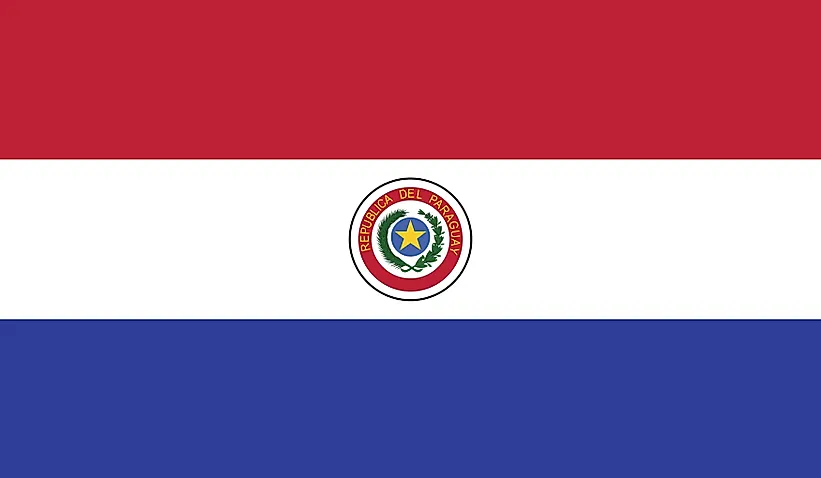
파라과이
| 대륙 | 아메리카 |
| 자본 | 아순시온 |
| 인구 | 6,862,812 |
| GDP | $64.67억 |
| 1인당 GDP | $9,500 |
| 다이얼링 코드 | +595 |
| ISO 코드(2글자) | PY |
| ISO 코드(3글자) | PRY |
파라과이 소개
전통과 현대가 독특한 조화를 이루는 나라 파라과이에 오신 것을 환영합니다. 406,752㎢에 약 710만 명의 인구가 거주하는 파라과이는 놀라운 문화적 회복력과 자연의 다양성을 결합하여 남미에서 가장 독특한 국가 중 하나로 자리 잡고 있습니다.
지리적 특징과 자연의 아름다움
파라과이의 지형은 파라과이 강을 사이에 두고 대서양 숲과 구릉이 펼쳐진 동부 지역과 반건조 평야와 습지가 있는 서부 차코 지역으로 나뉘어져 있습니다.
광활한 차코 야생지대, 이비쿠이 국립공원, 먼데이 폭포 등의 풍경이 펼쳐져 있습니다. 이 나라의 다양한 생태계는 이 지역 특유의 다양한 야생동물과 식물 종을 지원합니다.
보호 지역에는 독특한 차코 생태계와 남아있는 대서양 삼림을 보호하는 수많은 국립공원과 보호 구역이 있습니다. 환경 보호에 대한 국가의 노력은 독특한 생물 다양성을 보존하는 데 중점을 두고 있습니다.
문화 유산과 전통
파라과이 문화는 원주민 과라니족과 스페인 식민지 시대의 영향이 독특하게 조화를 이루고 있습니다. 파라과이의 유산에는 과라니어가 스페인어와 함께 공식 언어로 인정받는 등 광범위한 이중 언어 사용이 포함되어 있습니다.
전통 예술에는 난두티 레이스 제작, 도자기, 독특한 민속 음악이 포함됩니다. 음악 전통에는 파라과이 하프와 폴카가 있으며, 전통 무용은 여전히 중요한 문화적 표현으로 남아 있습니다.
파라과이 요리에는 소파 파라과이(옥수수 빵), 치파(치즈 빵), 테레레(콜드 메이트 차)와 같은 독특한 요리가 있습니다. 대가족이 모여 테레레를 나누는 전통은 여전히 사회 생활의 중심입니다.
역사 여행
파라과이의 역사는 원주민 과라니 문명부터 스페인 식민지, 독립에 이르기까지 다양합니다. 파라과이의 독특한 여정에는 고립과 심각한 갈등의 시기가 포함되어 있습니다.
중요한 시기에는 예수회 선교, 1811년 독립, 파괴적인 삼동맹 전쟁(1864-1870), 차코 전쟁(1932-1935)이 있습니다. 이러한 시련을 극복한 아르헨티나의 회복력은 아르헨티나의 국가적 특성을 형성했습니다.
현대 경제 환경
오늘날 파라과이의 경제는 수력 발전과 농업 및 목축업이 결합되어 있습니다. 파라과이는 세계 최대의 대두 및 재생 에너지 수출국 중 하나입니다.
최근 이니셔티브는 인프라 개발, 농업 현대화, 디지털 혁신에 중점을 두고 있습니다. 파라과이의 전략적 위치와 풍부한 자원은 지속적인 성장의 기회를 제공합니다.
국제 관계 및 글로벌 포지셔닝
파라과이는 국제 무역 파트너십을 촉진하는 동시에 지역 기구에 적극적으로 참여하고 있습니다. 파라과이의 재생 에너지 자원과 농업 생산은 파라과이의 글로벌 영향력을 확대하고 있습니다.
알고 계셨나요?
- 파라과이는 세계 최대의 재생 에너지 수출국 중 하나라고요?
- 이 나라에는 두 가지 공식 언어가 있습니다: 스페인어와 과라니어?
- 이타이푸 댐은 세계에서 가장 큰 수력 발전 시설 중 하나라고요?
- 파라과이의 차코 지역은 남미에서 가장 독특한 생태계를 보유하고 있나요?
결론
파라과이는 문화 보존과 경제 발전이 독특하게 결합된 나라입니다. 광활한 차코 야생지대부터 현대 도시, 원주민 유산, 재생 에너지 리더십에 이르기까지 파라과이는 독특한 개성을 유지하면서 계속 발전하고 있습니다. 파라과이는 지속 가능한 개발과 경제 다각화 등의 과제를 해결하면서 고유의 문화적 정체성을 보존하는 동시에 발전을 위해 노력하고 있습니다.





